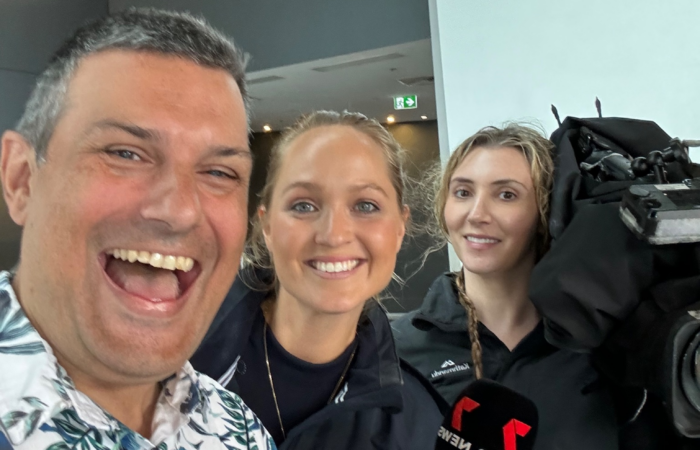How to Create a Marketing Strategy that Works. In Blackboard Fridays Episode 46, Jacob talks about Marketing. Need this implemented into your business? Talk to the international business advisor who can do exactly that – Contact Jacob, Learn More, or Subscribe for Updates.
Do you want more money?
If the answer is yes – and it doesn’t have to be – then your business needs to be continually improving your lead generation approach. Back in Episode 12, I shared the 5 Attractants to creating more relationships at the top of your Sales Hourglass – and number 3 was ‘Marketing’.
Most SME business owners I talk to do almost nothing in terms of Marketing. (Most also feel anxious about their cash flow more than 3 months into the future, and the two attributes are related.) Now, Marketing doesn’t just mean Paid Advertising, but there’s usually an investment of money and time required to make it hum.
In this week’s episode, I dive deeper into the specific elements that help you establish a great Marketing Plan. Once you answer these questions for your customers and your business, you’ll be much better placed to determine which ongoing activities (like Search Engine Optimisation, Facebook Ads, or producing a weekly video series standing in front of a blackboard) will connect you with more clients on a regular basis.
And remember back to the Sales Hourglass episode 10 and episode 11 of Blackboard Fridays, when we talked about the importance of Positioning and Engaging your contacts through some kind of nurture sequence. Unless your potential client is ready to pick up the phone and buy now, I would encourage you to plan their journey from accessing your website to signing up to your newsletters to learning and trusting you more through regular, high-value sharing of information.
Your database will determine your revenue growth – and that starts with the Marketing Strategy elements in this week’s video. Watch now:
Who is Jacob Aldridge, Business Coach?
“The smart and quirky advisor who gets sh!t done in business.” Back independent since 2019.
Since April 2006, I’ve been an international business advisor providing bespoke solutions for privately-owned businesses with 12-96 employees.
At this stage you have proven your business model, but you’re struggling to turn aspirations into day-to-day reality. You are still responsible for all 28 areas of your business, but you don’t have the time or budget to hire 28 different experts.
You need 1 person you can trust who can show you how everything in your business is connected, and which areas to prioritise first.
That’s me.
Learn more here. Or Let’s chat.
Transcript
Welcome to Blackboard Fridays. In this week’s episode, we’re going to give another example of how some of these different conversations and elements that we’ve touched on in previous episodes all fit together to form the businessDEPOT way. The contextual system with which we take our business clients on a journey from where they are now to where they want to be by ticking off all of the key elements of their business.
To show you behind the scene of where this fits in, if you remember the different layers of context: vision at the top and strategy was second. One of the key elements of strategy is having your brand promise. Your brand marketing strategy should be very clear for the business. That’s the specific conversation that we’re having today and obviously it’s informed by your commercial, cultural, and personal vision for the business.
Here in the key conversations I have with clients when we need to review their marketing strategy. One of the advantages of working with a contextual business coach is that we can cover a great range of these at a high level in a short period of time. If you need specific support , guidance, or implementation around some of these conversations, then it’s much easier to fit in a brand strategist or a marketing agency when you have that high-level contextual conversation clear for you and your partners.
I’m drawing it like this so that we don’t have to do a giant panorama across an entire blackboard and this is one of those great expansive conversations that business owners love to have where we go deep on all of these across the course of the morning or a day. It starts with an understanding of your ideal clients and this is where so many startup businesses go wrong. They focus only on themselves and their product and they don’t think about the market that they’re taking that product into. You watch the video on validating your startup idea and you’ll see we talked a little bit more about setting an ideal client and going out there and testing to see whether they actually care to buy what it is that you want to sell them.
So who is your ideal client? We need more information on that in Google things like ideal clients or personas. Here at businessDEPOT we actually break down our ideal clients into several categories depending on the specific services that we want to be supporting them with.
Once you have an idea of the ideal client and in my case that’s entrepreneur Ed who is someone who’s got an established successful business, somewhere between 12 and 96 staff and is currently feeling a little bit stuck that can see the potential the growth that’s in front of them but they can’t quite work out how to get there.) You see how I’m talking about Ed’s pain.
What it is that’s going on for him? This again is something that shows up with things like content marketing where people write massive blog posts or should gorgeous videos about their solution without remembering that the ideal clients aren’t googling for your solution but they’re googling for their pain.
So Ed feels stuck and feels a little bit unclear about his vision now. Maybe he’s struggling to manage his team. If I talk about those pain points, then that gives me permission to talk about how I might be able to solve them. The bridge or that journey from pain to solution is what I’m talking about in that step of the process.
Now how you wrap that up forms your brand promise and again, we’ve done a dedicated Blackboard Friday’s video just on Brand Promise episode 27 where you can go in and explain what you do very simply, who you do it for, why they use your service, and what outcomes your solution brings to them so you can understand when you see how all of these are connected, how the brand promise fits into an understanding of your ideal clients, their pain and your solution.
Now once you’re clear about the brand promise, you funnel that in to your lead generation activity. Again, we’ve done some specific blackboard Fridays episodes on lead generation and channel creation and how that then forms the start of your sales hourglass to recover the depth episode seven eight and nine.
All of these elements, informed by your vision, are designed to help funnel the right people into your hourglass so that you can then take them on the nurture and sales journey to convert them into clients and then beyond clients into referral, sources, communities, and the bigger opportunity which of course all looks back to why you started this business in the first place.
Think about your marketing strategy. Where is it focused? Because I see a lot of marketing strategies that are really just about some of the nurture sequences in that hourglass or a little bit of lead generation, unless you really have answered who your ideal clients are, what their pain is and what your brand promise is, you won’t have the right information to make the lead generation and sales process as smooth, efficient, and profitable as you need it to be.
Next Steps
Want to learn more about how this can apply to your business? It costs nothing to chat:
- Email me jacob@jacobaldridge.com (I read them all)
- Call, Text, or WhatsApp me +61 427 151 181
- Or just Subscribe https://jacobaldridge.com/about/subscribe-to-jacob-aldridge-com/ to stay in touch




